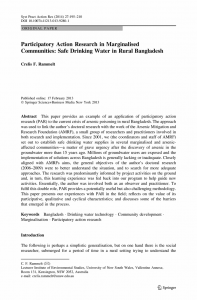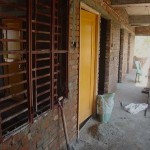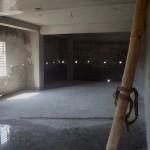In June this year, we began our collaboration with WaterAid to implement a project for the promotion of safe water, sanitation access and hygiene motivation. With our new staff, we recently organised a three-day Foundation Training, which included workshops and presentations on basic concepts of WASH (Water, Sanitation and Hygiene), community mobilisation, gender and equity, PLA (Participatory Learning and Action), and more. The full schedule can be found here.
Our film at the Green Unplugged festival
 Our documentary Development in Bad Waters is participating in the Green Unplugged online film festival. This festival will offer prizes based on viewer’s responses.
Our documentary Development in Bad Waters is participating in the Green Unplugged online film festival. This festival will offer prizes based on viewer’s responses.
Any reward will go to help support our work in Bangladesh, so please come vote for us by selecting the statuettes on the top right side of the film. Thank you!
Our program posted and discussed on ScienceAlert
 In Bangladesh, up to 77 million people are affected by dangerous levels of arsenic in the water – essentially the biggest mass poisoning in history. But a UNSW Science researcher and activist is currently leading an Arsenic Mitigation and Social Mobilisation program, empowering local communities to effectively and sustainably deal with the problem.
In Bangladesh, up to 77 million people are affected by dangerous levels of arsenic in the water – essentially the biggest mass poisoning in history. But a UNSW Science researcher and activist is currently leading an Arsenic Mitigation and Social Mobilisation program, empowering local communities to effectively and sustainably deal with the problem.
Join the discussion on ScienceAlert here.
Campaign: An ambulance for our community clinic
 Please share and support our online campaign. In 2011, we were granted support from the Japan Government to establish a community clinic. The construction is now almost completed. With this clinic we will strengthen the health related activities of our program. We are now looking for funds to purchase an ambulance though this online campaign. We are active in areas spread out over the district and will continue to expand into new communities thanks to our sponsors and to recent funding from WaterAid. Please have a look at this 4-minutes video for more information about the community clinic and the need to ensure transportation of patients.
Please share and support our online campaign. In 2011, we were granted support from the Japan Government to establish a community clinic. The construction is now almost completed. With this clinic we will strengthen the health related activities of our program. We are now looking for funds to purchase an ambulance though this online campaign. We are active in areas spread out over the district and will continue to expand into new communities thanks to our sponsors and to recent funding from WaterAid. Please have a look at this 4-minutes video for more information about the community clinic and the need to ensure transportation of patients.
An 8-minutes summary of ‘Development in Bad Waters’
For those who haven’t had a chance to see the full documentary ‘Development in Bad Waters’, we summarised the main points in this 8-minutes short version.
A few stills from the video
Our talk on arsenic and governance at Dhaka University
A study found that an average of 29% of Safe Water Options (SWOs) that were installed in response to the arsenic crisis over the past decade became arsenic contaminated or broke down. While already quite alarming, the study does not account for the fact that a proportion of the remaining active SWOs are in reality not community-based, but are monopolized by influential or well-connected families. AMRF was invited to discuss these matters in a guest lecture entitled “Arsenic in Bangladesh, a crisis of governance” at the Department of Geology, Faculty of Earth and Environmental Sciences, University of Dhaka.

Visit from a WaterAid film crew
As part of our collaboration with WaterAid (see New support for our programme from WaterAid), a film crew recently visited our projects to shoot a video for their fundraising and publicity purposes. In one year’s time, the crew will visit our projects again to record some of the changes brought about by our projects. To be continued…
New support for our programme from WaterAid
![]() We are very pleased to announce that WaterAid Bangladesh has expressed interest in supporting AMRF for a period of 3 years nine months (2013-2016) to implement a project to promote safe water, sanitation access and hygiene motivation among the rural poor in the arsenic-affected sub-districts of Sreenagar and Lauhajang under Munshiganj district. This will allow us to continue expanding our programme into new communities and share our experiences with other organisations at the national level.
We are very pleased to announce that WaterAid Bangladesh has expressed interest in supporting AMRF for a period of 3 years nine months (2013-2016) to implement a project to promote safe water, sanitation access and hygiene motivation among the rural poor in the arsenic-affected sub-districts of Sreenagar and Lauhajang under Munshiganj district. This will allow us to continue expanding our programme into new communities and share our experiences with other organisations at the national level.
Update: Community clinic under construction
A few recent snapshots of the construction site for our community clinic, supported by a Grant Assistance for Grassroots Human Security Projects from the Japan Government (see also earlier posts here and here).
Publication: Participatory Action Research in Marginalised Communities, Safe Drinking Water in Rural Bangladesh
 The field research experience described in this article arose from an involvement in a safe drinking water programme in rural Bangladesh since 2005. The projects set out to establish water supplies in several marginalised and arsenic-affected communities – a matter of grave urgency since the discovery of arsenic in the groundwater more than a decade ago. Millions of users are exposed and the implementation of solutions is generally inadequate. The research objectives were (1) to better understand the situation, and (2) to search for more adequate approaches. The research was predominantly informed by project activities on the ground and, in turn, this learning experience was fed back into the programme to help guide new activities. Essentially, the researcher acted both as an observer and practitioner. To fulfil this double role, Participatory Action Research (PAR) provides a potentially useful methodology. This paper presents the experiences with PAR in the field, and reflects on its participative, qualitative and cyclic characteristics. It discusses implications of PAR for governance, as well as for academic research.
The field research experience described in this article arose from an involvement in a safe drinking water programme in rural Bangladesh since 2005. The projects set out to establish water supplies in several marginalised and arsenic-affected communities – a matter of grave urgency since the discovery of arsenic in the groundwater more than a decade ago. Millions of users are exposed and the implementation of solutions is generally inadequate. The research objectives were (1) to better understand the situation, and (2) to search for more adequate approaches. The research was predominantly informed by project activities on the ground and, in turn, this learning experience was fed back into the programme to help guide new activities. Essentially, the researcher acted both as an observer and practitioner. To fulfil this double role, Participatory Action Research (PAR) provides a potentially useful methodology. This paper presents the experiences with PAR in the field, and reflects on its participative, qualitative and cyclic characteristics. It discusses implications of PAR for governance, as well as for academic research.









